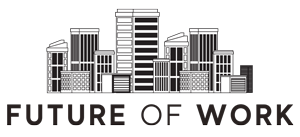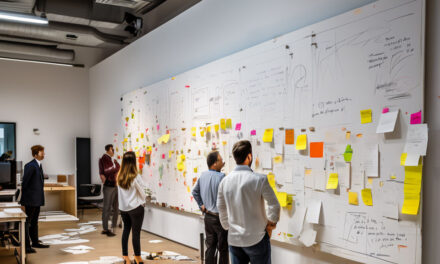When we think of innovation in the workplace, most of us are more inclined to picture knowledge workers and laptops.
Yet, market pressures such as globalisation and the ageing workforce have created a critical inflection point for industrial businesses.
These organisations are facing challenges such as a labour crunch, global supply chain issues, siloed working practices, worker safety regulations, stealth competition, and rising costs. This nexus of forces means that efficiency, uptime and cost control are now pivotal strategies for organisations in the manufacturing, healthcare and logistics sectors that want to grow and thrive.
To address ever-eroding profit margins, these asset-intensive industries must explore digital transformation programmes to achieve better cost control, operational efficiency, uptime & availability, and compliance. Technologies such as enterprise asset management (EAM) are a not only key enabler but can also strengthen and improve organisational teamwork and collaboration. It can also pave the way for innovations such as wearable technologies, particularly when it comes to maintaining assets such as fleets of vehicles, and manufacturing equipment.
The future of work in industrial organisations is about making the lives of the people that manage very complex machines easier and safe. It’s a surprisingly human business. And what these highly skilled people want most, is less administrative hassle, and time liberation to attend to more pressing and valuable tasks.
The skills challenge looks different in the next generation of industrial workers
Getting the people part of the equation correct is a critical success factor, because the mixed-age and skills sparsity of industrial workforces is resulting in a significant labour crunch. According to our 2023 EAM Trend Report1, an ageing workforce is the number one issue affecting organisations. Investing in retaining or attracting suitable personnel features in the top three future concerns of the industrial businesses surveyed.
Younger, digitally literate talent is the new norm in today’s generation of industrial workers. Engaging this cohort, while retaining the knowledge and experience of older people poses a serious challenge. Next-generation technology can provide a dual resolution.
By harnessing technologies such as artificial intelligence (AI), digital twins, wearables, mobile devices and other emerging tools, high-tech teams can leapfrog current approaches and drive the transformation their teams, and customers’ needs.
In a maintenance setting for example, wearables are useful for visualising and confirming recommended steps. Maintenance teams report enjoying ‘hands-free’ working, assisted error detection and a reduction in overall inspection time. Wearables can also help to bridge pockets of generational knowledge by facilitating a ‘hub and spoke’ system for remote and automated diagnostics. In this scenario, frontline workers can access years of technical data and know-how remotely, so that fewer skills are required frontline to the assets they’re working on, and the productivity of valuable human capital is fully realised.
Mobile hardware is increasingly being used for tasks such as scanning, printing, and label management. This is great for handling stock and inventory (both in and out), on the shop floor of a logistics company for example, as well as in warehouses.
Ease of use is equally as important as ‘mobility’ when it comes to meeting the expectations of the younger generations. Providing teams with flexible access to the tools and insights they need, anytime and anywhere is an important step. Making those tools fit for purpose is the secret to acceptance and adoption. Mobile technologies go a long way in improving worker satisfaction and training processes. After all, a worker that is satisfied with the tools they use to complete their job (EAM included) will automatically do a better job than a frustrated one.
They not only create worker flexibility by helping them to navigate warehouse layout and operations, but mobile technologies enable industrial businesses to provide consumers with sustainability-related information about their products. In addition to paper reduction, EAM technology contributes to lowering energy consumption and carbon emissions by optimising operations.
The Bristol Port Company
The UK’s most centrally located deep seaport employs more than 600 people directly with over 12,000 more employed within businesses on its 2,600-acre dock estate. When the Bristol Port Company initiated a programme to increase safety, reduce complexity and enable standardization across its business, it turned to EAM from IFS Ultimo.
The Port replaced its existing maintenance management system, an additional 50 databases and spreadsheets to improve its engineering management. Offering one of the most cost-effective logistics solutions to its customer base, the Bristol Port thrives because of its ability to handle vessels of up to 130,000 deadweight tonnage and its proximity to a major populous area of the UK with 43 million people, 67 percent of the UK population, within a 250km radius.
Through its digital transformation, the Port now operates a more efficient and effective ‘permits to work’ process that is focused on increased safety for both staff and contractors. The previous system had become outdated, and time-consuming to use. Thanks to EAM, the team also cites better visualisation of hazardous and non-hazardous work, enabling quicker and more comprehensive deconfliction of work. Complete control over the data collected, enables better business decisions.
The business advantage of connecting workers and assets
According to McKinsey research2, employee disengagement and attrition could cost a median-size S&P 500 company between $228 million and $355 million a year in lost productivity. Over five years, that’s at least $1.1 billion in lost value per company. The challenge is for businesses is to keep their thriving stars satisfied and engaged while also creating the same conditions for other types of workers. I believe that an efficient and empowering work environment is a key strategy here.
Teams want to collaborate. The workflow of it just makes sense to assure that everyone is on the same page. So, EAM systems must integrate seamlessly. This can include reliability engineers, who need to be included in the work process and able access the ‘single source of truth’ data. With the safety of workers paramount, being able to interconnect technologies, gives health and safety considerations a seat at the head of the table. It creates a mutual understanding of the impact of regulations on operations and maintenance, and vice versa.
In an industrial setting this means leveraging automation technologies, as well as improving the customer experience and operational efficiency with real-time tracking and data visibility. For example, delivery route optimisation or driver mobile productivity solutions. If you are serious about asset management and improving your strategy, the integration of mobile technologies is integral to a more intelligent and connected ecosystem. They enhance collaboration, compliance checks, and overall efficiency within the supply chain.
Transparency between maintenance, safety, and operations can be a competitive differentiator for industrial organisations. What’s exciting in this area is the huge potential for integrating EAM with emerging technologies such as drones, AI and predictive analytics – the use of data, statistics, modelling, and machine learning to predict and plan for future events or opportunities. The potentially outcomes include asset availability, uptime, time savings, effective resource allocation, and importantly highly skilled and engaged employees.
Connecting industrial employees seamlessly to the working world around them will empower them to work smarter, stay safer and deliver better business results. Organisational assets are continuously sharing valuable information about a business. Make sure you are listening.
Based at the Company’s Netherlands head office, Berend joined IFS Ultimo in 2017 as a content developer, trainer and coach.
Booms draws upon his extensive experience and insight into the EAM market to deliver excellence to both internal and external stakeholders. He leads the global thought leadership and content programs at IFS Ultimo – helping customers to aggregate detailed product information and technical knowledge with business value. A regular host and speaker at international events, Booms’ authority helps to underscore the Company’s reputation for accelerated and sustained time-to-value for EAM solutions.
Prior to joining IFS Ultimo Booms was working on a consultancy basis. He was previously the distribution change manager, business analyst & run-the-business training lead at Cisco Systems, where he provided training support to some of Cisco’s biggest distribution partners. There, Booms was recognized as a distribution subject matter expert by various global and regional forums.
Also a former account manager at Ingram Micro, he is a graduate from the University of Oxford, Université Paris 1 Panthéon-Sorbonne and Leiden University.






